The Turkish Ottoman Bow and the Mongolian Bow represent two of the most advanced archery technologies of their time, developed for the specific needs of their respective armies. Both bows were integral parts of the military strategies used by the Ottomans and the Mongols, but they differed significantly in design, construction, and use on the battlefield.
In this article, we will explore the differences and similarities between these bows, their role in military tactics, and the characteristics of the archery units in both armies.
Turkish and Mongolian Archery Units
Ottoman Archers: The Janissaries
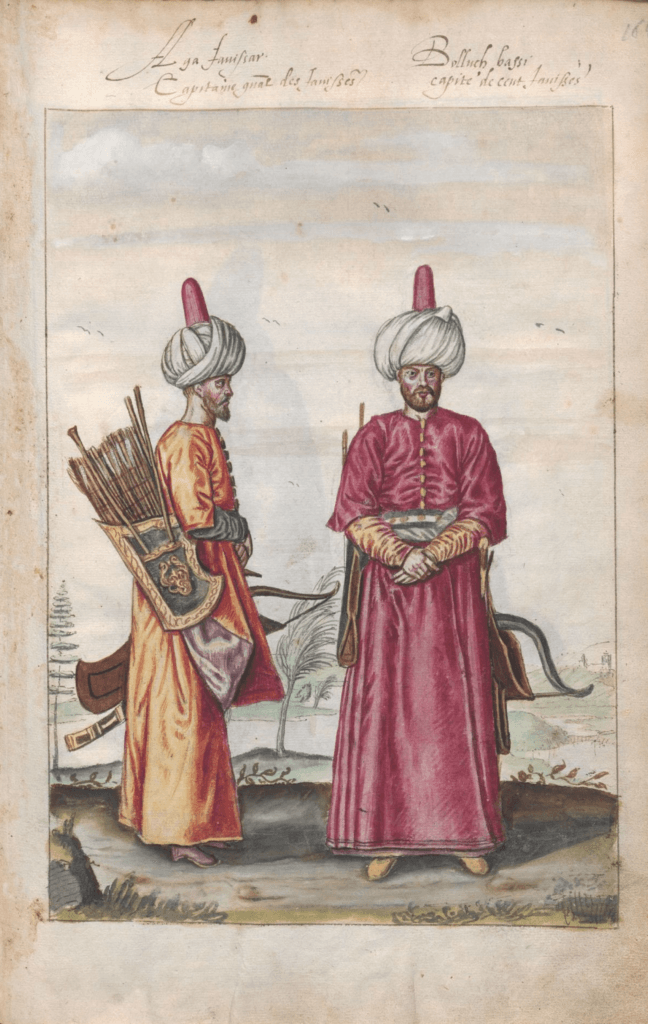
The Ottoman army’s elite archery unit was the Janissaries, who were known for their discipline and skill. The Janissaries were a special class of soldiers, trained from a young age and loyal only to the Sultan. They played a pivotal role in the Ottoman military, and their mastery of the Ottoman bow was central to their effectiveness. The Turkish recurve bow was the primary weapon of the Janissaries, known for its accuracy, speed, and power. Ottoman archers were highly trained to shoot from both foot and horseback, often engaging in both siege warfare and open-field battles.
Mongolian Archers: Horseback Masters
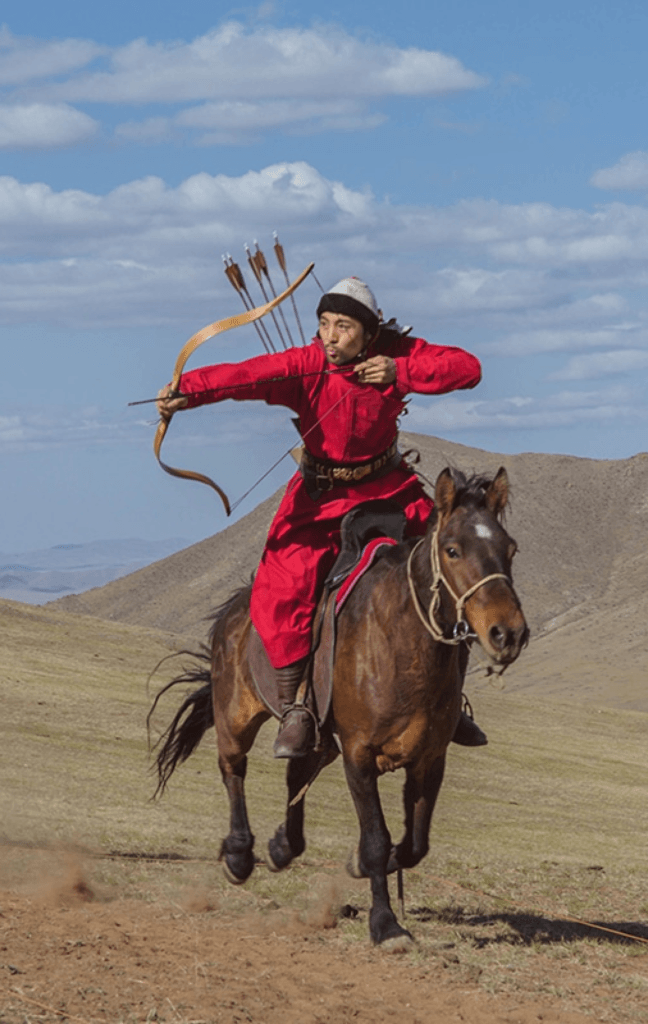
The Mongolian army was dominated by highly mobile, mounted archers. Mongol archers were not an elite class like the Janissaries but instead consisted of nearly the entire Mongolian army. Every Mongol warrior was expected to master the Mongolian composite bow, and this focus on archery made the Mongol forces highly effective at long-range engagements. The Mongolian bow was specifically designed for horseback shooting, and Mongolian archers could release arrows while riding at full speed, a skill that gave them a significant advantage in battle.
Design and Construction of the Bows
Turkish Ottoman Bow
The Turkish Ottoman bow is a composite bow made from wood, horn, and sinew. Its design is highly reflexed, meaning the bow curves forward when unstrung. This reflexed shape allows the bow to store more energy, resulting in faster arrow speeds. The Ottoman bow is relatively short, usually around 41 inches (104 cm) in length, making it highly suitable for use on horseback. The rigid siyahs (bow tips) increase the draw weight and contribute to the bow’s overall power.
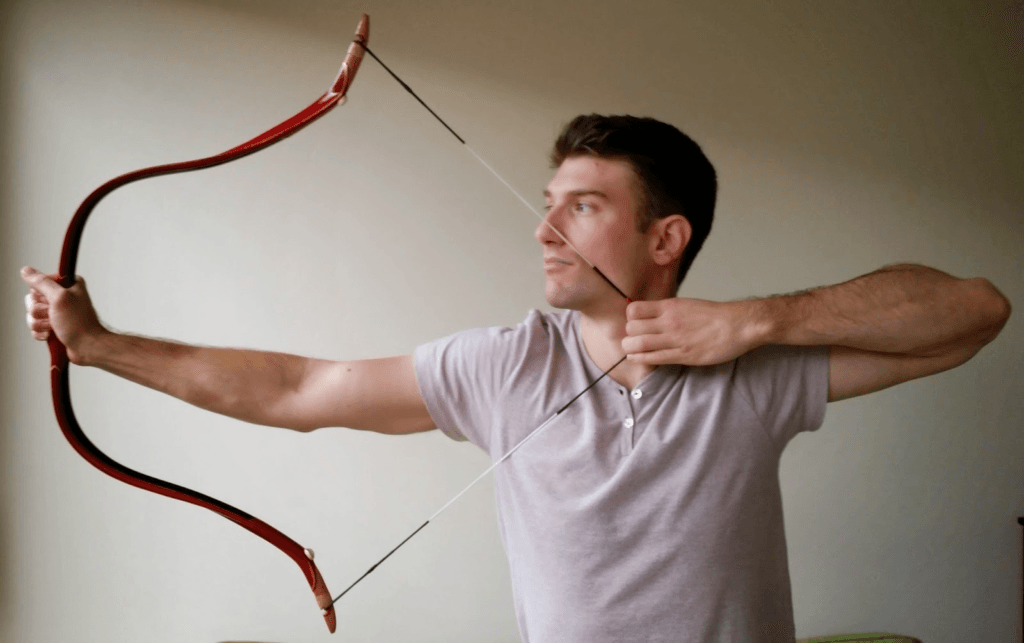
One of the unique aspects of the Turkish bow is its ability to shoot arrows over long distances. During the Ottoman period, archers like Tozkoparan İsmail were known to shoot arrows over 800 meters in official contests, a feat that remains unmatched by most modern bows. The bow’s power and speed made it ideal for rapid, repeated shots, which were essential in the fast-paced skirmishes typical of Ottoman warfare.
Mongolian Bow
The Mongolian composite bow is also made from wood, sinew, and horn but is typically larger than the Ottoman bow, measuring around 50-60 inches (127-152 cm). The Mongolian longbow was designed to maximize power and range. Its longer draw length allowed for more energy to be stored, making it incredibly powerful. The Mongolian shortbow, often used on horseback, had a slightly shorter draw length but was still longer than the Turkish bow.
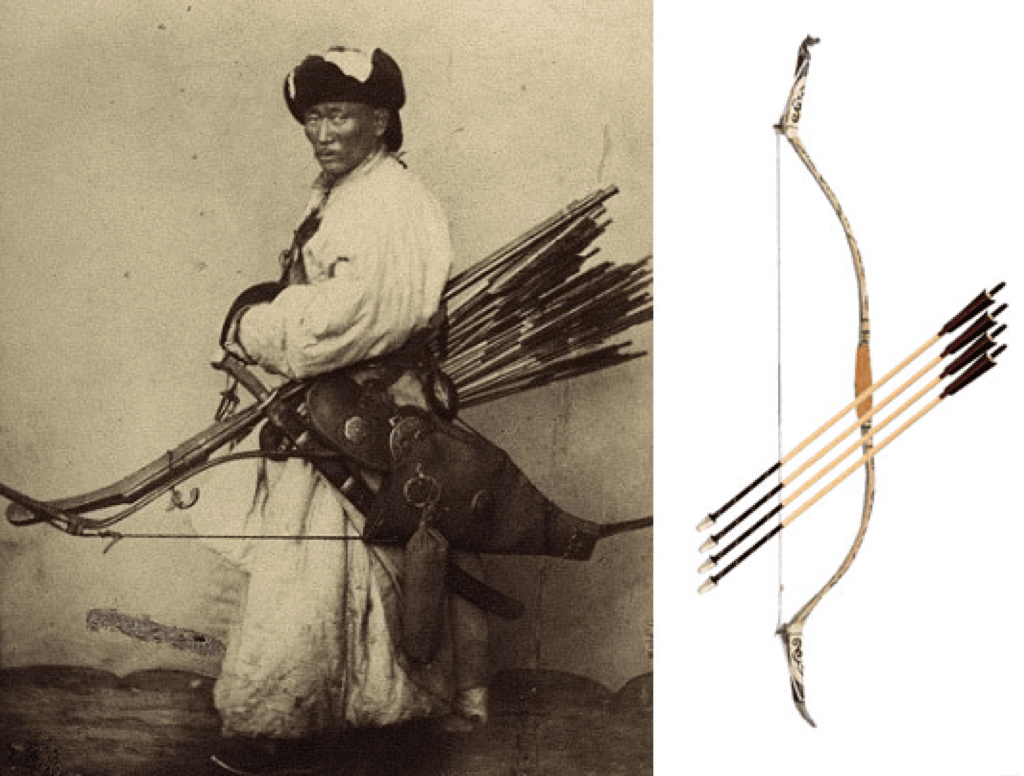
The Mongols relied on their bows for both hunting and warfare. The Mongolian draw technique, using a thumb release, allowed archers to generate more power with less effort. The bow’s flexibility and strength were essential for the Mongols, who often fought in cold weather, where other bows might crack or lose tension. The composite structure of the Mongolian bow ensured its durability in harsh climates.
Arrows and Shooting Techniques
Turkish Arrows
Ottoman arrows were made from lightweight woods like poplar and featured long, slender shafts. These arrows were designed for speed and distance, perfectly complementing the characteristics of the Ottoman bow. Ottoman archers used a variety of arrowheads depending on the type of battle—broadheads for piercing armor and bodkin points for long-distance accuracy.
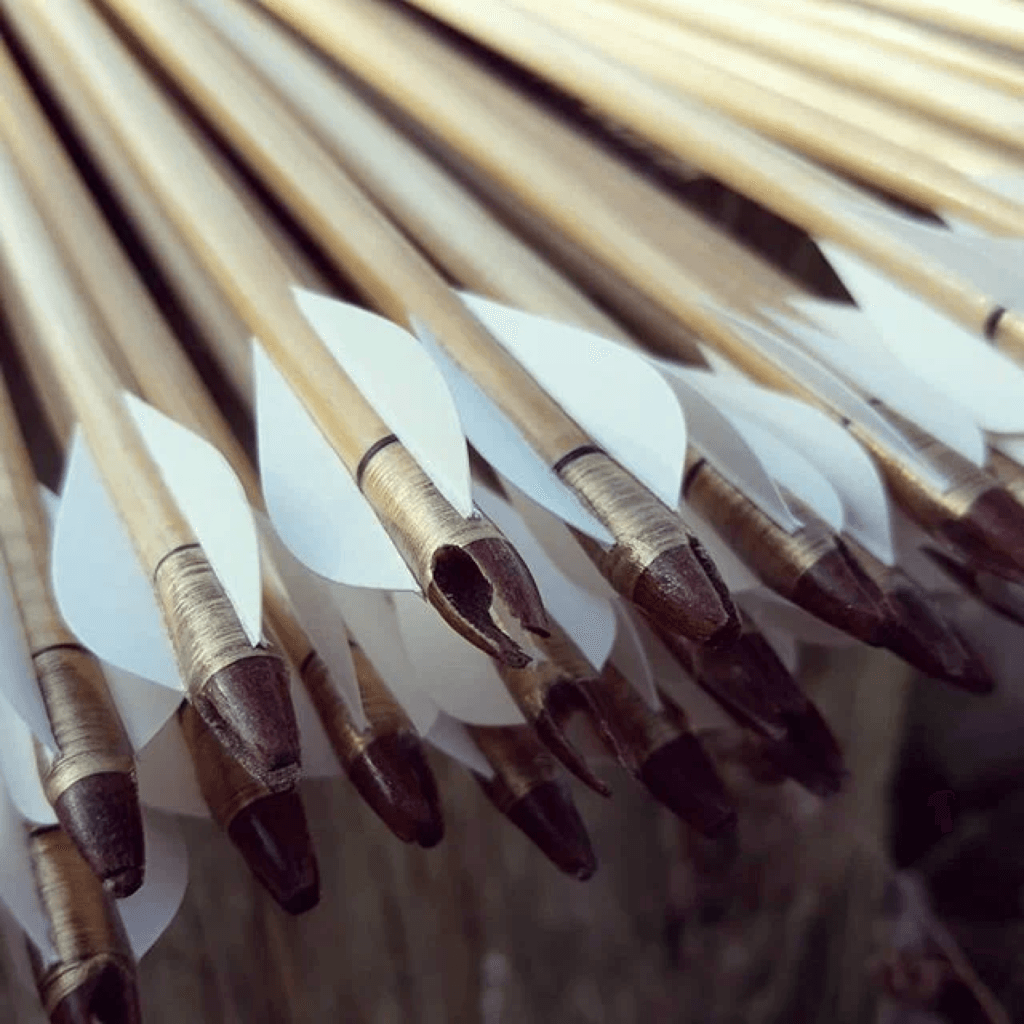
The shooting technique in Turkish archery emphasized precision and quick release. The thumb release was commonly used, along with a special technique of resting the arrow on the thumb rather than the bow hand, allowing for quicker shots. This technique was highly effective in both siege warfare and fast cavalry engagements.
Mongolian Arrows
Mongolian arrows were typically shorter and thicker than Ottoman arrows. They were designed for power and penetration, with heavy broadheads that could pierce enemy armor. Mongol archers carried a quiver with a wide variety of arrows, including specialized arrows for long-range shots, armor-piercing, and incendiary arrows for siege warfare.
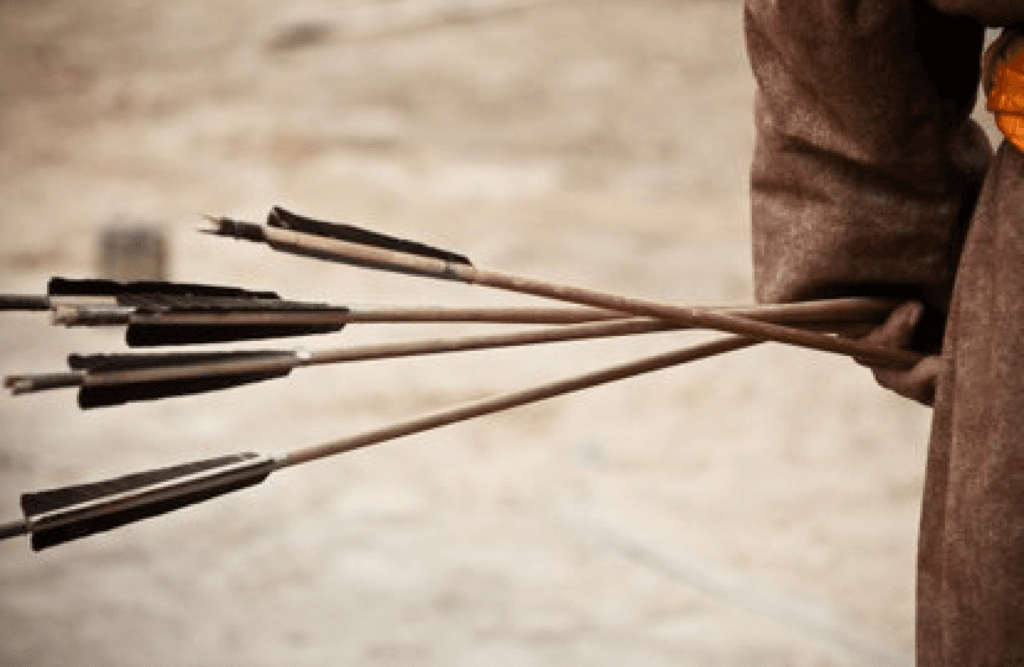
Mongolian archers also used the thumb draw, which allowed for a more powerful release compared to the Mediterranean draw used in Europe. The Mongolian draw gave the bow an advantage in terms of power and range, especially when combined with their flexible and strong composite structure.
Performance: Power, Speed, and Range
Power and Speed
The Turkish bow was known for its speed. The highly reflexed design allowed for quick release and rapid shooting. The bow could shoot arrows at speeds exceeding 240 feet per second (73 meters per second). This speed was critical in both cavalry engagements and in massed infantry formations. Ottoman archers were trained to release several arrows in quick succession, overwhelming the enemy with a barrage of projectiles.
In contrast, the Mongolian bow was designed for long-range power. The Mongolian draw technique, which used a thumb release, allowed archers to pull the bowstring back further than the Mediterranean draw used in Europe. This extra draw length resulted in more energy being transferred to the arrow. While not as fast as the Ottoman bow, the Mongolian bow could shoot heavier arrows that penetrated armor more effectively. In long-range engagements, the Mongolian bow was superior, capable of shooting arrows over 300 yards (274 meters).
Range and Accuracy
The Ottoman bow was highly accurate, especially at medium ranges. Ottoman archers excelled in flight archery, with recorded distances exceeding 800 meters in official contests. In battle, the Ottoman bow was effective up to 300 meters, with rapid follow-up shots ensuring a constant stream of arrows.
The Mongolian bow had a longer effective range due to its larger size and greater draw weight. Mongol archers often engaged enemies from a distance, softening them up before closing in for a decisive charge. The Mongolian composite bow was known for its accuracy at long ranges, particularly when used in conjunction with the Mongolian draw. The bow’s range could reach up to 500 meters under ideal conditions, giving the Mongols a significant advantage in open-field battles.
Battlefield Use
Ottoman Archery
Ottoman archers played a key role in both cavalry and infantry units. Janissary archers were trained to fire arrows in rapid succession, overwhelming the enemy with a hail of projectiles. The Ottoman bow was highly effective in siege warfare, where precision and range were critical for defeating fortified positions. Ottoman archers often engaged the enemy from a distance, softening them up before the cavalry charged in.
The compact size of the Turkish bow made it particularly useful for cavalry archers, who could shoot accurately while riding at high speeds. This agility on the battlefield allowed Ottoman forces to outmaneuver slower, less flexible armies.
Mongolian Archery
Mongolian archers, on the other hand, relied heavily on mobility and long-range engagements. The Mongolian bow was essential in their hit-and-run tactics. Mongol warriors would approach the enemy at high speed, release a volley of arrows, and retreat before the enemy could counter-attack. This tactic was highly effective, especially when combined with the superior range of the Mongolian longbow.
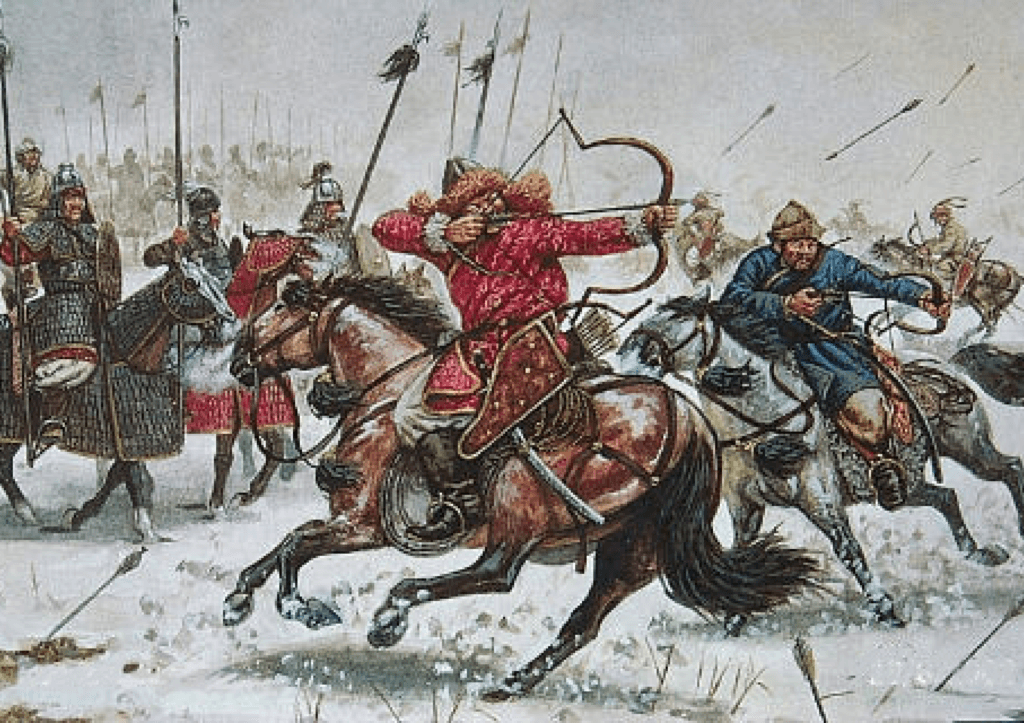
The Mongolian composite bow had the added advantage of being effective in both hot and cold climates, allowing Mongol armies to fight year-round. The durability and range of the Mongolian bow made it one of the most feared weapons of the medieval world.
Conclusion: Turkish Ottoman Bow vs Mongolian Bow
The Turkish Ottoman Bow and the Mongolian Bow were both exceptional weapons, each suited to the unique needs of their respective armies. The Ottoman bow was designed for speed and rapid fire, making it ideal for mounted combat and sieges. The Mongolian bow, on the other hand, emphasized power and long-range accuracy, which was crucial in the Mongol army’s hit-and-run tactics. Both bows remain symbols of the military prowess of their empires, and their legacy continues in modern traditional archery.
What is the main difference between the Ottoman and Mongolian bows?
The Ottoman bow is shorter and faster, designed for rapid fire, while the Mongolian bow is larger, with more power and range.
How far could Ottoman archers shoot?
Ottoman archers could shoot up to 800 meters in official contests, with effective battlefield range up to 300 meters.
What type of arrows did Mongol archers use?
Mongol archers used shorter, heavier arrows designed for armor penetration, often equipped with broadheads.
What is the effective range of the Mongolian bow?
The Mongolian bow could shoot accurately up to 500 meters, with enough power to penetrate armor at long distances.
Are Turkish and Mongolian bows still used today?
Yes, both types of bows are still used by traditional archers, and modern versions are available for purchase through various craftsmen and retailers.

